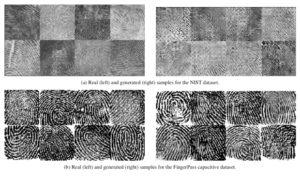According to a paper that was presented during a security conference that took place in Los Angeles, researchers have created a neural network capable of creating artificial fingerprints that can rival real ones in biometric identification.
These fingerprints, named “DeepMasterPrints” allegedly have an error rate of just one in a thousand.
The DeepMasterPrints work because they take advantage of two properties that fingerprint-based authentication systems depend on: one of them is the fact that most of those fingerprint readers only scan whatever part of the finger touches the scanner, not the entire fingerprint.

Image via “DeepMasterPrints: Generating MasterPrints for Dictionary Attacks via Latent Variable Evolution”
These systems do not bring together all the partial images in order to compare the full finger against a full record of it – they only compare partial scans to partial records.
The second property is that some fingerprints are, actually, more common than others. A fake fingerprint has just enough common features to match with others, statistically speaking.
The researchers used machine learning to take advantage of these two properties, creating artificial fingerprints that match as many partial fingerprints as they possibly could. The AI managed to create fakes that, to the human eye, resemble real fingerprints.
If you think this research is going to be sent out into the wild and anyone will be able to access your phone, you’re wrong: the team that created the DeepMasterPrints did this in order to get the attention of companies that use that particular biometric identification method and encourage them to increase security.
The team hopes that the result they have achieved will bring about more ‘liveness detection’ in biometric sensors.
Follow TechTheLead on Google News to get the news first.























